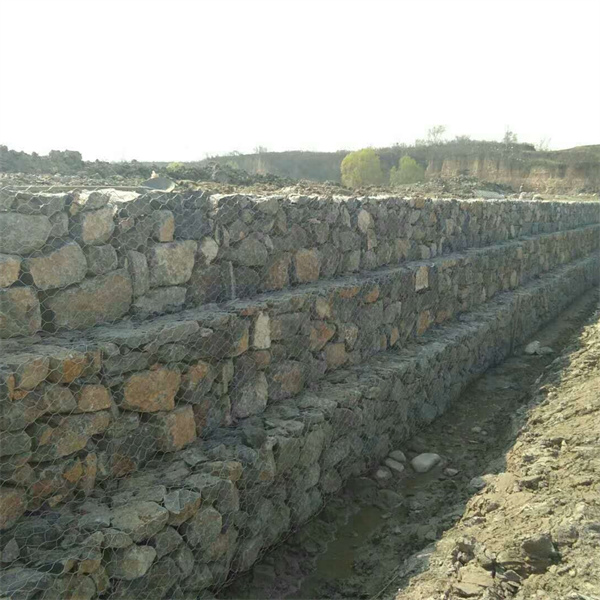Жел . 25, 2024 12:01 Back to list
Constructing a Durable Gabion Wall for Your Landscape Needs
Building a Gabion Wall A Comprehensive Guide
Gabion walls, constructed using wire mesh cages filled with stone, are innovative and versatile structures widely used in landscaping, erosion control, and even as retaining walls. Their aesthetic appeal, stability, and functionality make them a popular choice for homeowners and contractors alike. This article aims to provide a comprehensive understanding of how to build a gabion wall effectively.
Understanding Gabion Walls
The term gabion is derived from the Italian word gabbione, meaning big cage. Traditionally used in civil engineering, gabions are designed to hold materials like rocks, stones, or even recycled materials. The walls are characterized by their open structure, allowing for excellent drainage and a natural appearance that blends well with the landscape.
Benefits of Gabion Walls
1. Erosion Control Gabion walls are highly effective in preventing soil erosion on slopes. Their structure allows water to flow freely, reducing pressure build-up and minimizing washout.
2. Aesthetic Appeal These walls can be customized in terms of size and stone type, making them an attractive feature in gardens and outdoor spaces.
3. Stability and Durability The use of heavy stones ensures that gabion walls withstand harsh weather conditions and require minimal maintenance.
4. Environmental Friendliness Gabion walls can be built using natural stones, making them an eco-friendly choice compared to concrete or other materials.
Step-by-Step Guide to Building a Gabion Wall
1. Planning and Design
The first step in building a gabion wall involves proper planning and design. Determine the purpose of the wall—whether for aesthetic reasons, erosion control, or as a retaining wall. Next, choose the location and dimensions. Ideally, a slight slope away from the wall should be maintained for drainage.
2. Gather Materials
A gabion wall requires several materials
wholesale building a gabion wall

- Gabion Baskets These are available in various sizes and can be bought from wholesale suppliers. - Filling Material This can include natural stones, recycled concrete, or brick. - Geotextile Fabric Useful for preventing soil erosion behind the wall and enhancing drainage. - Tools You will need gloves, wire cutters, a shovel, and a tamper.
3. Site Preparation
Prepare the site by clearing the area of vegetation and debris. Level the ground where the gabion wall will be constructed. If the wall is intended as a retaining wall, consider digging a trench that is slightly wider than the gabion baskets to provide a stable base.
4. Assemble Gabion Baskets
Follow the manufacturer’s instructions to assemble the gabion baskets. They generally come in a flat form and can be easily folded and secured using wire ties. Place the baskets in the prepared area, ensuring they are aligned and stable.
5. Fill the Gabion Baskets
Once the baskets are in place, start filling them with the chosen stone material. Begin from the back of the basket and work your way to the front, ensuring that stones are packed tightly to enhance stability. A tamper may be useful to compact the stones as you fill.
6. Secure the Tops
After filling the baskets, fold the tops down and secure them to prevent any stones from spilling out. Ensure that the gabion wall is level and check for any gaps that may need filling.
7. Add Finishing Touches
Depending on the purpose of the gabion wall, you can add finishing touches such as planting greenery around the base to enhance its appearance. Additionally, you may want to integrate lighting or seating options for a more functional space.
Conclusion
Building a gabion wall can be a rewarding project that enhances both the beauty and functionality of your outdoor space. With proper planning and execution, these structures can provide long-lasting solutions for erosion control and landscaping while promoting an eco-friendly approach to construction. Whether you're a DIY enthusiast or a seasoned contractor, gabion walls offer versatility and durability that will stand the test of time.
-
Visualizing Gabion 3D Integration in Urban Landscapes with Rendering
NewsJul.23,2025
-
The Design and Sustainability of Gabion Wire Mesh Panels
NewsJul.23,2025
-
The Acoustic Performance of Gabion Sound Barriers in Urban Environments
NewsJul.23,2025
-
Mastering the Installation of Galvanized Gabion Structures
NewsJul.23,2025
-
Gabion Boxes: Pioneering Sustainable Infrastructure Across the Globe
NewsJul.23,2025
-
Custom PVC Coated Gabion Boxes for Aesthetic Excellence
NewsJul.23,2025
-
Installation Tips for Gabion Wire Baskets in Erosion Control Projects
NewsJul.21,2025






